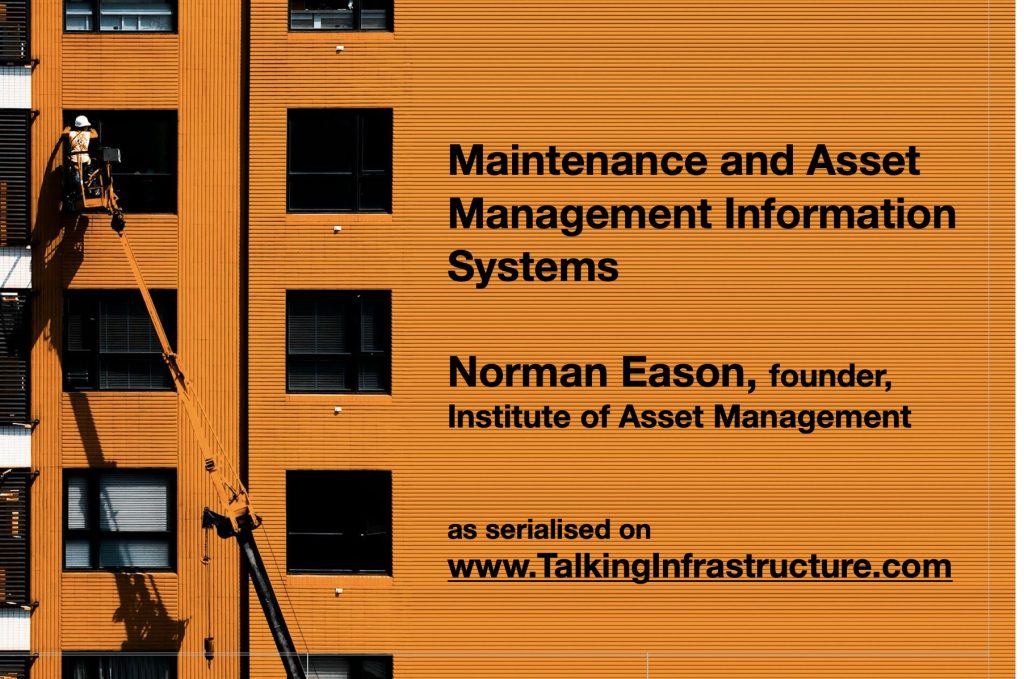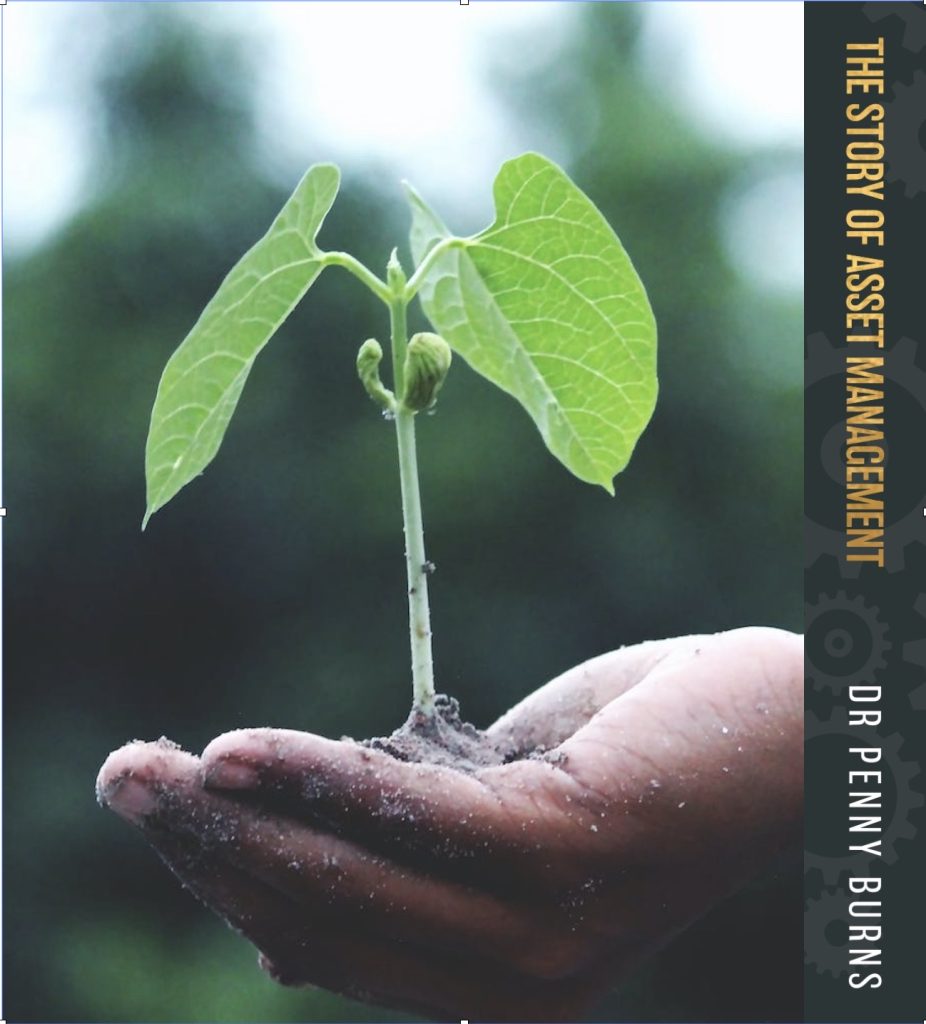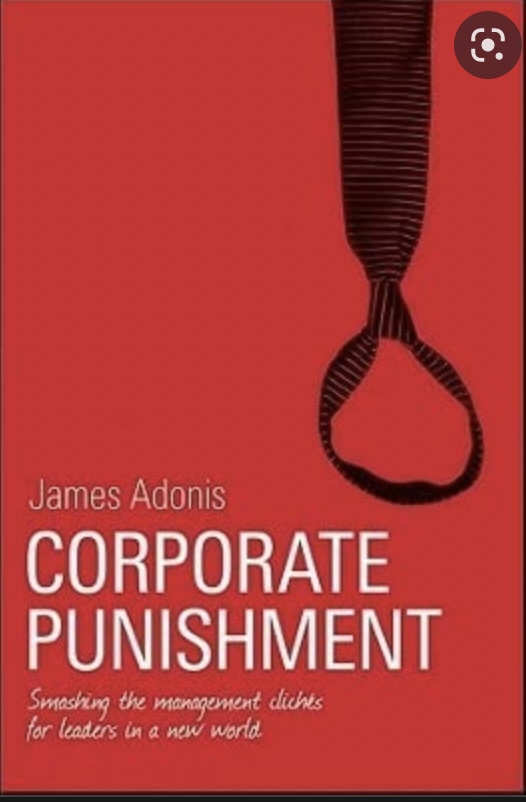Today we uploaded Part 4 of this serial. See what is available – and come back next week for more.

CONTENTS
Chapter 1, p.01 Scope of this book – what’s in it and what’s not
Chapter 2, p.12 Maintenance and Asset Management – the difference between them
Chapter 3, p. 22 Data and Information, Pt 1 – not the technology but the use
Chapter 3, p. 35 Data and Information, Pt 2 – differing needs of Maintenance and Asset Manaagement
Chapter 4, p.45 Objectives of Maintenance and Asset Management Systems – differences due to the attitudes of company management and maintenance operations
Chapter 5, p.58 The nature of the problem – and the problem of lock-in
Chapter 6, p.71 Codes – the way an organisation describes itself in an information system
Chapter 7, p.83 Functions – how to ensure the functions you need are fhe functions you get
Chapter 8, p.87 Technology – trends to be aware of
Chapter 9, p.99 Culture – a new and different framework for thinking about information systems
Part Five
Chapter 10, p.110 Evolution – when does the implementation of a new system end?
Chapter 11, p.120 Interconnection – maintenance systems are not the first to be computerised
Chapter 12, p.130 Methodologies – with the maturity of methodology comes a new are of divergence
Chapter 13, p.135 Traditional approach to product development – evolution v revolution
Part Six
Chapter 14, p.142 Successful procurement for through-life effectiveness – 5 areas that need to be addressed
Part Seven
Chapter 15, p. 172 Objective assessment of progress – productivity is the act of bringing a company closer to its goals.

Nobody likes being told what to do. So ‘Maintenance and Asset Management Information Systems’ doesn’t. Norman Eason’s vast experience and insightful observations will simply help you think it out for yourself! Much more enjoyable.
Part 2 of our serialisation of Norman Eason’s ‘Maintenance and Asset Management Information Systems’ addresses the problem of data into information.
My own experience – and I suspect yours also – is that when data storage became so cheap as to be ignored, we also tended to ignore data relevance. Early tendencies were to collect whatever we could – and figure out its use later. Are we still doing this?
Are you really sure?
Why not check? In Part 2 of Norman’s book, now available on the Talking Infrastructure website, Norman addresses the practical needs of both maintenance AND asset management – and makes a clear distinction between the two.
His work is easy, and it is fun to read.

Norman Eason, founder UK IAM, was not only an information systems innovator but a business strategist. Great combination!
We are now serialising Norman Eason’s major work “Maintenance and Asset Management Systems” and chapters 1-3 are already available. Don’t miss this.
I first met Norman in 1996 and later interviewed him for Strategic Asset Management when he visited Australia in 2000. In 2002, he came to Heathrow airport to see me off and gave me the manuscript of this work to edit and use ‘as I saw fit’. I felt enormously privileged to be entrusted with this work. So I did a light edit and in 2004 I published it, serial fashion, with side annotations, a chapter a week on my original website.
In the twenty years that then passed, that website was closed and I lost the original. It was only after he died, and thanks to my friends, Geoff Webb, who had printed out the entire thing as it was being published and sent me his hard copy, and Kerry McGovern, who patiently scanned the whole thing for me, that I again have a copy that I can share with the Asset Management Community.
Re-reading this work now makes me even more appreciative of Norman’s insight. For example, even some 30 years ago, when many were still thinking that asset management was simply ‘maintenance plus’ he was urging his readers to consider that:
‘movement from a traditional maintenance operation to asset management will take much more than the procurement of an asset management information system; it requires a fundamental change in culture that could take years to achieve. Indeed, the procurement of an asset management information system by a traditional maintenance operation without an accompanying change in culture could have a negative, rather than a positive, effect on the organisation’.
This is a message which is as relevant today as it was then. So don’t miss our serialisation of Norman’s work. It seems appropriate that after 20 years, we again make this available – and in the original web format. So enjoy!
Chapters 1-3 are available now.

Don’t be! Today we start a new serialisation of “Maintenance and Asset Management Information Systems” by Norman Eason, founder of the UK Institute of Asset Management whose ideas are as useful now as when he wrote them when Asset Management was at its beginning.
See Chapters 1-3 Here.
Norman Eason died two years ago today, February 24th. Not only was he the founder and first president of the UK Institute of Asset Management, he was the most innovative thinker of his time on the subject of information systems. He was one of the earliest to apply computer technology to maintenance and his Rapier system won a European Award in the early ’90s.
When he realised that companies were buying computerised maintenance systems without having a maintenance strategy and without linking their information requirements to their business, he decided it was time to address this serious issue, which led to his lobbying and the founding of the IAM in the UK in 1995 of which he was their first President.
It also led to his writing one of the most interesting books on maintenance and asset management information systems you will ever read.
In 2002 he gave me the manuscript of this work and asked me to do with it whatever I could as he now wished to spend his time in his garden. So I lightly edited it and, in 2004, I serialised it on the amqi.com website but did not keep it permanently available in case he should change his mind and decide to have it professionally edited and published. But he never did. Which is a pity since it is such a valuable work.
It was his view that the reason for procurement of an information system for maintenance or asset management is to make use of the information that it accrues. Pretty basic, but there are signs that some have forgotten what should be obvious
“The system should be a fundamental part of the Data to Wisdom Ladder – Data, Information, Knowledge, Wisdom – and the choice of the system will determine its effectiveness. Without an awareness of how data and information interact and how best they can be managed, no system will be effective. Chapter 3 addresses this subject and also introduces the concept of data as an asset, whereby users of information systems are encouraged to view data (and information) as valuable company assets that should be managed in a similar way to all other corporately important assets”
Read the first three chapters now.

Note: Print copies of The Story of Asset Management are available, go here and choose the direct Amazon link for your location. (and my thanks to Matthew Hughes who drew my attention to the fact that this was not at all obvious.)
A writer for the Guardian described ‘The Story of Asset Management’ as the ‘inside story of a major change’. She said: “While discussions about government reforms make take centre stage, the behind-the-scenes processes of problem-solving and innovation remain less documented” and this is very true.
I am grateful to her for this insight, for it tells me that this story of how AM grew, can also be used as a rough guide to growing any idea. I can’t say that I knew this at the beginning, but looking back, I think that there are three keys to growing an idea. 1. You have to be fully committed to your idea which doesn’t mean knowing exactly how to do it, but rather having, and believing in, a direction you want to move in. 2. You can’t expect others to do the work, you have to be prepared to do much of it yourself. 3. But while you are doing this, you must actively share the excitement, fun – and the credit – as widely as you possibly can.
As you read the many anecdotes in this story I would be interested to hear from you whether you believe this to be true. I hope you enjoy the story, simply as a story, our story. But I would be very pleased if you were able to use it fo further an idea of your own, either in asset management or elsewhere.
Penny

With the beginning of a new year, most of us are thinking about what we plan to do in 2023 – we consider our aims, objectives, goals and targets.
I am reminded of a conversation, some years ago, between Françoise Szigeti, who was then Vice President, International Centre for Facilities, Ottawa, Canada and Helen Tippett, then Emeritus Professor, Faculty of Science, Victoria University, New Zealand.
Françoise observed that the same words tended to be used to convey totally different meanings, and Helen came up with the following that she uses to help her students keep the meanings straight.
- “You AIM for the stars.
- Your OBJECTIVE is to land on the moon.
- Your GOAL is to build a rocket with enough fuel to get you there at an affordable cost.
- Your TARGET is be ready to launch in two years.”
Got It?

We have to be more efficient, do more with less! Why?
It has been of increasing concern to me that we seem to be focussing on efficiency without having the right steps in place for effectiveness. Why, I asked myself was this happening? The answer I came up with – which you may not agree with – is that it is relatively easy if you are the Commonwealth or State Government or a Head Office, to focus on policies that impose efficiency on others. Effectiveness, however, requires each of us to make changes of our own – much harder!
Thinking along these lines I issued a challenge to the asset managers taking part in the History Forum at the time, I asked “ Is Asset Management still fun? Or has our concern for efficiency (doing the same with fewer resources) driven out our interest in effectiveness (doing better by doing differently)?
I was thinking of effectiveness as getting the right assets in place, in other words, capital optimisation (which I still think we do rather badly) rather than maintenance optimisation (which I think we do rather well). But John Hardwick saw another aspect to effectiveness. He saw the necessity to get the right culture and information infrastructure in place. Both logically pre-date a focus on efficiency. Here is John’s comment, which is worth thinking about.
“Well, I can’t miss the opportunity to comment on this one. I don’t know how you pick your topics but this one is great. I think the doing more with less can only really become successful if you have already put the building blocks in place, set up the right culture and created the IT systems to gather the information for decision making. This creates the effective part of the story but how do you then deal with efficiency? Well, for me there are two options. One you can take on more risk. At least if your Asset Management is working you can articulate the change in risk. The other option is to look at your people and process to understand if this is optimum. What interested me the most with this topic Penny is you must be in sync with our company. I have just been moved from the strategic area of our company to managing about 700 people delivering outcomes. Interestingly i am still the business process owner for Asset Management. I am sure there are going to be some real challenges in this move. The funny part is this means I am more excited then ever. New challenges, new people to influence, more people to become part of the Asset Management community if i get it right. If it does not excite you then get out of the field and do something else.”
Amen!
Your thoughts?
Do you know where are good examples that illustrate improvements in AM effectiveness (either capital optimisation or organisational culture)?

Today the pressure is on to measure and track our performance with KPIs, but it is important that we measure the right things. The following story is from 30 years ago but the message still applies.
I had only just joined the water agency in South Australia as a policy analyst, when a complete stranger turned up, not at my office but at my home, and presented me with a dirty scrap of t-shirt material. “There!”, he said angrily, “that’s what happens when I put that under my tap. What are you going to do about it?” I was mystified how he knew where I worked, and even more mystified about what I was expected to do.
A month later there he was again, with another piece of muddy t-shirt. This time I decided to find out from our water quality section just what was going on. It turned out that as most of our water comes from the River Murray and we are at the tail end of the river, there was a great deal of sediment that was carried along with the water. The practice at that time was to thoroughly flush out the pipes once a month to keep the water at a good quality. After flushing, the water was relatively clear and free of sediment, but for those few hours the water flowed like gravy!
Now, the authority’s water statistics told the engineers that they provided relatively clear water 99.5% of the time, which was held to be a pretty good service. But anyone who put through a load of white washing at the time of the flushing probably thought it an exceedingly poor service. Who was right?
After speaking with the water quality team about my visits from the t-shirt man, they decided that it would be a good thing to at least let people know about the flushing program and when it was going to take place so that they could avoid using the taps at that time.
Later, they were able to find ways of avoiding the flushing problems and still provide a reasonably good quality of water.
But neither of these two actions were taken until the water quality team started thinking about the problem from the perspective of the user! The KPI’s told them they were doing a good job.
Your thoughts and experience? Are your KPIs giving you the right information?

“We donʼt get the recognition we deserve” the council’s maintenance guy told me. “Nobody ever says, ‘Thanks!’”
But why would they when you have just told them your organisation has an insurmountable renewal gap in its road assets?”
We have to wonder if presenting problems without solutions is really what asset management is about. What if a brain surgeon told you that you have a brain tumour but nothing could be done about it, would you say ʻthanksʼ? Or would you be inclined to downgrade his expertise, seek a second opinion and/or wallow in the misery of the diagnosis? If so, why should councils be any different?
If, however, your brain surgeon said: ʻYou have a brain tumour, it is tricky, but we can operate and there is an excellent chance that, if you follow the regime that I will give you, you will recover well.ʼ Would you now say a heartfelt ʻThanks!!’ Indeed you would. Again, why should councils be any different?
We now have models that enable easy prediction of future asset renewal. It really is ʻplug and playʼ, we put in the raw data and, hey presto, out come the answers. These projected asset renewal costs will generally be far above the capacity of the organisation to finance, so we cannot stop there. Providing this ʻraw dataʼ is NOT the end of the Asset Management task, merely a preliminary data input.
A Solution?
Suppose now that you say to your council. “This is the current state of the asset renewal gap. The figures represent the cost of continuing to do things the way we have always done them in the past. This problem has built up over many years and it will take a number of years to correct, but with your support and using the asset management tools and knowledge we now have, we can reduce this gap to manageable levels.
As a bonus, what if, at the end of the year, you are able to recalculate the gap and demonstrate that you have made, say, a 10% or 20% reduction, and that, with actions already in hand, you are on track to reduce the gap even further in the following year, do you think that they will now say: “THANKS!”? Of course. You have now done something worth thanking.
Asset Management is not about presenting problems – it is about addressing them.
This was ten years ago. Where are we today?

Yes, it may be frantic now as we try to finish up all those things we promised we would have done ‘by the end of the year’, but soon it will be Christmas and, hopefully, we can relax and catch up on reading more, as we also promised ourselves, but didn’t get done.
If this sounds like you, may I recommend a book that will have you laughing as well as learning? In “Corporate Punishment”, James Adonis, takes apart 38 of the most common – and most annoying – business clichés, such as ’employees are our greatest asset’, ‘think outside the box’, ‘pick the low hanging fruit’, and the ever-present but abysmally misleading ‘what gets measured, gets done’. At the very least, you will avoid the embarrassment of using them yourself.
The cleverness of the cover illustration encouraged me to pick this up and start reading and after that, the author kept me going until the very last page. I don’t know about you, but it is the rare book I read right through to the end nowadays, so this is a rare recommendation.
AM Clichés?
Reading these general business clichés reminded me that we have our own in asset management – perhaps the leading one being ‘there are no votes in maintenance’. If there were a book of AM Clichés, what clichés would you suggest should be included?

Recent Comments